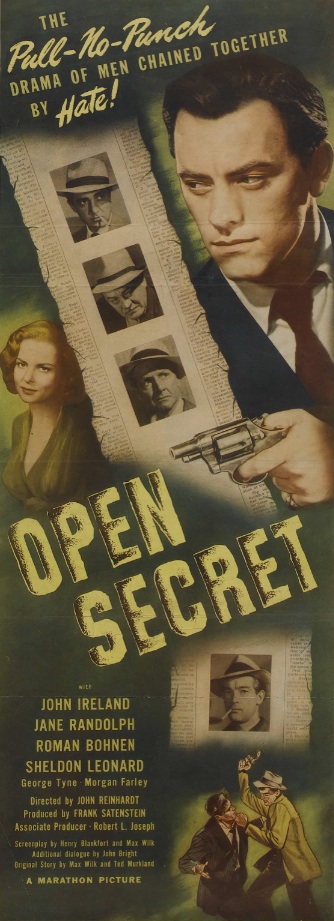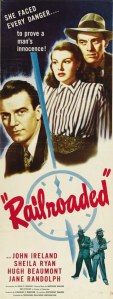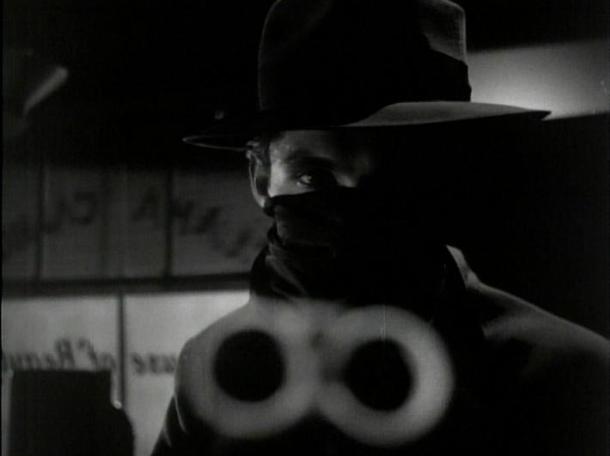 There are two schools of thought regarding Charles Barton’s Abbott and Costello Meet Frankenstein.
There are two schools of thought regarding Charles Barton’s Abbott and Costello Meet Frankenstein.
On the one hand, it was the final nail in the coffin of the increasingly moribund Universal monster series. If you’re a horror purist, then Abbott and Costello Meet Frankenstein represents the nadir of Universal Studios’ monster movies.
On the other hand, if you’re someone who loves horror-comedies, then Abbott and Costello Meet Frankenstein represents one of the best-known and most enduring films in the genre.
It wasn’t the first horror-comedy. Paul Leni’s silent film The Cat and the Canary (1927) was the cornerstone of Universal’s horror machine, and it had plenty of comedic elements. James Whale’s The Old Dark House (1932) is both scary and incredibly funny, which is not an easy mixture to pull off.
And the practice of throwing comedians into a horror-movie scenario didn’t start with this film either.
The Ritz Brothers were paired with Bela Lugosi in The Gorilla (1939), and Bob Hope and Paulette Godard starred together in a remake of The Cat and the Canary (1939) and the horror-comedy The Ghost Breakers in (1940).
So by the time Abbott and Costello Meet Frankenstein was released, not only were horror-comedies an established part of the box-office landscape, but Universal Studios had firmly demonstrated that they had run out of ideas beyond the “mix and match” approach, which gave us Frankenstein Meets the Wolf Man (1943), House of Frankenstein (1944), and House of Dracula (1945), each one more campy and silly than the last. (And the last “straight” monster movie that Universal released in the ’40s — Jean Yarbrough’s 1946 film She-Wolf of London — was pretty dull.)
My main problem with Abbott and Costello Meet Frankenstein is that I don’t find Abbott and Costello funny. The duo started in vaudeville, and every comedic set piece in their films feels to me as if it needs to be watched in the midst of an easily amused, wildly guffawing audience for the full effect. Watching their films at home just doesn’t work for me. (I felt the same way about Mel Brooks’s 1974 horror-comedy Young Frankenstein when I rented it years ago. After hearing for most of my life that it was one of the funniest movies ever made, I was shocked by its obvious jokes, its incredibly slow pacing, and the way Gene Wilder mugged for the camera. The problem, I think, is that the jokes are timed to allow for a large audience to rock with laughter before the next joke is dropped. If you’re watching it for the first time alone, however, it can feel awfully slow.)
As a nearly life-long aficionado of Universal monster movies, I appreciated the look of Abbott and Costello Meet Frankenstein. The film is set in Florida, and the sets are an effective mix of castle-like structures and steamy swamps. I also enjoyed seeing Bela Lugosi reprise his most famous role — Dracula. John Carradine played the Count in House of Frankenstein and House of Dracula, and he was fine, but there’s no beating Lugosi. And it’s always fun to see Lon Chaney Jr. as Larry Talbot, a.k.a. The Wolf Man.
 I also liked that Abbott and Costello Meet Frankenstein wasn’t overloaded with characters. Lugosi performs a kind of double duty. As Dracula, he turns into a bat and bends people to his will, but he’s also a mad scientist, scheming to bring Frankenstein’s monster (Glenn Strange) back to life to do his bidding. (The gag is that he plans to use the brain of Lou Costello, one of the dumbest characters in the history of cinematic comedy.)
I also liked that Abbott and Costello Meet Frankenstein wasn’t overloaded with characters. Lugosi performs a kind of double duty. As Dracula, he turns into a bat and bends people to his will, but he’s also a mad scientist, scheming to bring Frankenstein’s monster (Glenn Strange) back to life to do his bidding. (The gag is that he plans to use the brain of Lou Costello, one of the dumbest characters in the history of cinematic comedy.)
Despite its classic Universal-horror look, there’s really nothing scary about Abbott and Costello Meet Frankenstein. The director, Charles Barton, was a hard-working journeyman who had a lot of experience directing comedies and none directing horror. But the special effects do look really good. The main thing that stood out for me was Dracula’s transformations into a bat, which look much better here than they did in Dracula (1931). In Abbott and Costello Meet Frankenstein the transformations are achieved with a mixture of hand-drawn animation and puppetry. Still, I’ll take the eerie power of the original and its rubber bat on a string over an Abbott and Costello horror-comedy any day.



